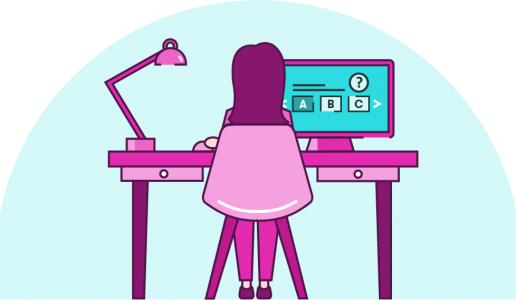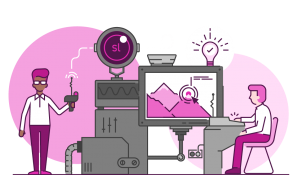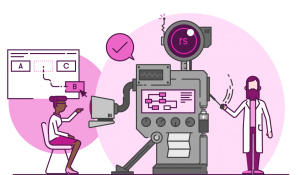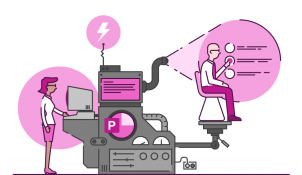When you’re teaching a skill, it’s important to assess learners’ progress. It’s a way of making sure you’re on the right track to meeting your learning objectives, and flags up anything that you might have missed.
Whilst quizzes, tests, and other eLearning assessments are a tried and tested way to track improvement, learners start to suffer when eLearning is focused more on assessment than on the act of learning itself.
Learning zone vs. performance zone
A useful way of understanding the issues with overassessment comes from Eduardo Briceño’s excellent TED talk ‘How to get better at the things you care about’.
In his talk, Briceño discusses the learning zone and the performance zone. In the learning zone, the goal is to challenge yourself and improve. Learners do this through what Dr. Anders Ericsson calls ‘deliberate practice’: concentrating solely on one very specific skill or subskill, and challenging themselves to go above their current level of skill or knowledge.
For example, if you were learning how to speak Finnish you might do deliberate practice of the declension of a noun you’ve learned, using flash cards. Or, if you’re a keen tennis player, you might set aside time in your training session to do deliberate practice of just your backhand return.
In the learning zone, there is a lot of repetition, mistakes are expected, and feedback is frequent. The performance zone presents a completely different set of challenges. The goal of the performance zone is to do the best you can. In conversation with a Finnish person, or on the court in a tennis match, you are unlikely to be thinking deliberately about the skill you’ve practiced in the learning zone: your focus will be on executing the skill as well as possible.
The performance zone has value: it allows us to use our skills to get the job done to the best of our ability, and helps to inform us about where we need to focus when we go back to learning. Briceño explains that high performance in any skill comes from a good balance between time spent in the learning and performance zones.
However, in most parts of our life, we are expected to spend most – if not all – our time in the performance zone. This actually stops us from being able to improve, and means that our skill levels plateau instead of increasing and increasing over time.
Getting in the learning zone
Briceño outlines four steps to spending more time learning:
- Believe you can improve
- Be motivated to improve
- Know how to improve through deliberate practice
- Carry out your practice in a low-stakes environment
Step 4 is where it gets interesting. Briceño makes the point that effective learning involves making mistakes, so in the learning zone we need to make sure the consequences of making mistakes are minimized. He also points out that this just isn’t how teaching and learning environments currently work.
Beyond the obvious pressures of standardized testing, classroom environments are often high stakes. Social risks mean that even children in school think that if they make a mistake they’ll look bad, or be thought less of by their peers. We’ve probably all experienced the embarrassment of raising our hand in class and giving an incorrect answer (at least I hope it’s not just me!). But this pressure to perform, even in supposedly learning-oriented spaces, is holding back learners from reaching their true potential.
So, what can we do – as instructional designers – to tip the balance towards the learning zone?
Top tips for balanced eLearning assessment
Let learners fail
Interactive eLearning content provides an opportunity to give learners time to practice, and fail in a positive way. Include drills, games, and interactive scenarios where the learner can benefit from making mistakes. Explicitly state that incorrect answers won’t affect the result that’s reported on the LMS (Learning Management System), and provide constructive feedback so that the learners know where they need to focus on improving.
Alternate between learning and performing
Don’t make learners spend the first half of the eLearning reading through information, and the second half taking a multiple-choice quiz. Sprinkle short tests or quizzes throughout the eLearning module. Chunking makes the content more digestible, and regular feedback helps the learners to reflect on their progress and identify what they need to go back and practice again. If you need a bit of guidance on how to actually write effective eLearning assessments, we’ve got you covered.
Allow free navigation
Following on from the point above, make sure that learners can go back and recap. If they haven’t understood something, or haven’t practiced enough, they need to be able to navigate back and have another go.
Take a blended approach
Consider how you could encourage learners to return to the learning zone after they finish the eLearning and go back to performing in real life. Provide job aids, create follow-up videos, or just send the eLearning around again after a few weeks in case learners need a refresh.
For more guidance on creating effective eLearning assessments, check out our 4-part blog series for plenty of practical tips – you can read the first article here.
Leave a comment




